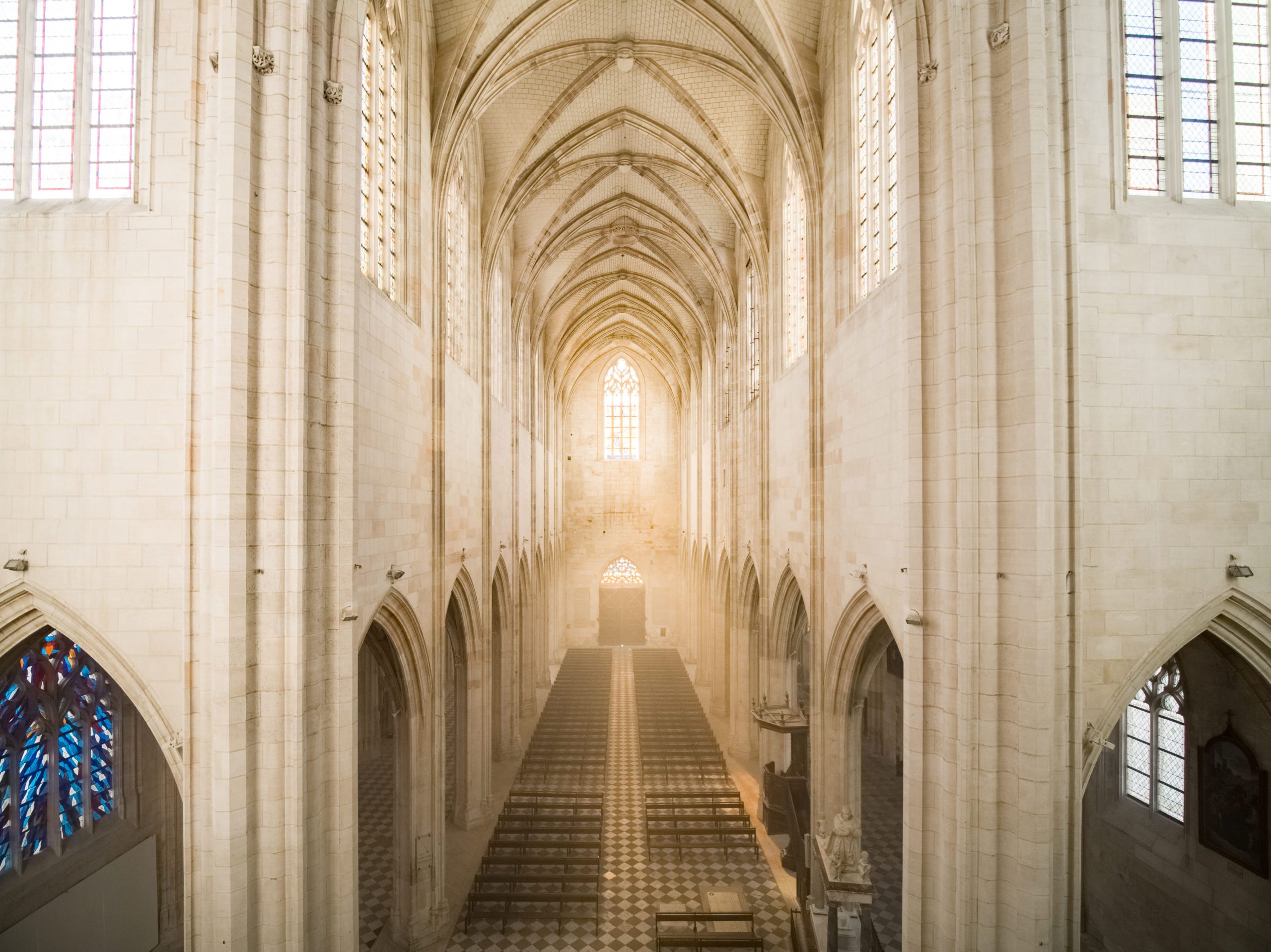The Notre-Dame de Cléry Basilica
You cannot stay in the Loiret without stopping at the Notre-Dame Basilica! Standing 38 metres tall, this old lady has dominated the village of Cléry-Saint-André for centuries. A major pilgrimage destination, the Cléry Basilica has received the favours of the Kings of France. Its destiny is inseparable from that of King Louis XI, who chose is as his resting place. Feel free to cross the threshold of this beautiful Dame who will tell you her history and show you her hidden treasures.
➔ The basilica is accessible every day from 9am to 7pm, except during Masses and ceremonies.
5 good reasons to visit the basilica
- A unique site: a major place of the History of France and pilgrimage.
- Its architecture: a masterpiece of the flamboyant Gothic.
- A royal residence: burial place of King Louis XI.
- Its decoration: glass windows of the 6th and 19th centuries.
- The historic Vendôme carillon: it rings every day at 7:05 am, 12:05 pm and 7:05 pm.

A place with many lives
The discovery of a statue of the Virgin Mary
The story of the Basilica dates back to the 13th century, when ploughmen discovered a statue of the Virgin Mary in a field of Cléry-Saint-André. The word soon spread, and many pilgrims came from all around to pay their respects and commune in front of Mary, invested with miraculous powers. It was then decided to build a chapel to welcome these passing visitors.
Faced with the extent of the phenomenon, King Philippe Le Bel decided to build a more ambitious church, the first stone of which was laid in 1339. However, the Hundred Years War plunged the region into torment. The English showed no mercy for Notre-Dame de Cléry and left the bell tower for sole witness.
The Royal Chapel
The Church’s rebuilding was initiated in 1444 by the Lord of Beaugency, Jean de Dunois, the famous “Orleans bastard” and comrade in arms of Joan of Arc. He even decided to order a funerary chapel in which he was buried alongside his wife.
Let’s not forget that the destiny of the Basilica is inseparable from that of King Louis XI. The latter multiplied donations and was very devout towards Notre-Dame; He proclaimed it the “Royal Chapel” in 1467 and chose it as his resting place. He has laid there since 1483. He was the first King of France to not be buried alongside his predecessors, in the Saint-Denis Basilica, to the North of Paris.
The rebirth of the Basilica
The life of a church is not a long peaceful river. Notre-Dame de Cléry was further embellished at the beginning of the 16th century before being ransacked once again, first during the Religious wars and again during the French Revolution. A restoration campaign was led throughout the 19th century, thus asserting its architectural and heritage value. It was classified as a “Historic Monument” in 1840 and Pope Léon XIII gave it the honorific title of Basilica in 1894.
Located on the Santiago de Compostela route, the beautiful Dame still welcomes many pilgrims after more than 500 years.
Photo credits © Marie Morin – Perspectives de voyage © Office de Tourisme des Terres du Val de Loire
A masterpiece of flamboyant Gothic architecture
This great vessel of light-coloured stone, a masterpiece of the flamboyant Gothic style, has been designed as a veritable showcase of light. Forget the hustle and bustle of the outside world and let the silence and clarity of the stained glass windows colour the stone. Here, the Gothic style expresses itself in all its splendour.
Exceptional stained glass windows
Linger over these works, the oldest of which depict scenes from local history. More modern creations by Swiss glass artist Pierre Chevalley bathe the building in colourful reflections.
The Tourist Office of Terres du Val de Loire, along with the financial support of the European Union, accompany you in the discovery of the Notre-Dame de Cléry Basilica. Visit aid items (a film, brochures and stands) are provided to highlight the Basilica’s history and architecture and offer you a high-quality visit.
